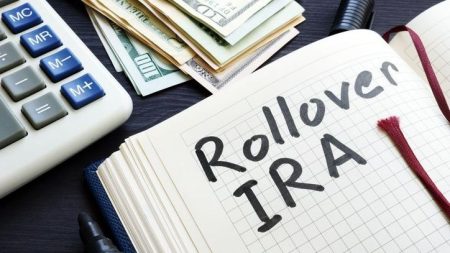It can be financially feasible to retire when projected retirement income equals or exceeds projected retirement expenses. In many cases, withdrawals from $1.6 million in a taxable brokerage account and $1.1 million in an IRA will total more than a typical retiree’s expenses. However, much depends on the desired retirement lifestyle. Age at retirement is also a key factor, and retiring at 52 adds significant complication, including the need to pay for health insurance before Medicare eligibility and accounting for rules on early distributions from retirement accounts. Consulting with a financial advisor who understands your specific financial situation, risk tolerance and retirement aspirations can empower you to make a well-informed decision about your ideal retirement timeline.
Retirement Decisions
The key factor in deciding when anyone can afford to retire is finding out whether their investment accounts can support withdrawals sufficient to pay the expenses that will continue after they stop earning income by working. To prepare this retirement budget, planners can start with either the income projection or the expense projection.
To generate income estimates, many people use rule of thumb of a 4% withdrawal rate. This figure, multiplied by your amount of investable assets, is the dollar figure computer models indicate can be withdrawn from a conservatively managed nest egg in the first year. After that, the amount adjusts annually by the rate of inflation. However, it’s also important to account for the impact of taxes, especially since the money in your IRA and taxable brokerage will be subject to different sets of rules. Additionally, retirees can and may need to withdraw different amounts as changing market conditions, unusual expenses or other circumstances dictate.
A common figure is 75%, which suggests someone earning $100,000 annually the final years of working would need $75,000 a year in retirement. The adjustment reflects the way expenses such as college tuition, mortgages and retirement saving decline or disappear in retirement. Remember, the below example is an oversimplification. Consider speaking with a financial advisor who can help advise you on the nuances of planning for your retirement goals.
Withdrawal Strategies
With a total of $2.7 million in investable assets, a retiree using the 4% rule might expect to be able to safely withdraw $2.7 million times 4% or $108,000 the first year. If inflation is 3%, the second year they would withdraw $111,240 and so on. Using this approach, Monte Carlo modeling suggests that more than 90% of the time the retiree will not run out of money before 30 years.
This is a conservative estimate that among other things employs a risk-averse asset allocation of half equities and half fixed-income. A retiree who needed more income could consider a more aggressive investment approach and potentially generate more income. It’s also possible that investment returns could lag historical averages and require a cautious retiree to withdraw less or risk running out of money.
Retiring at 52 brings up additional considerations. One is the way withdrawals will be taxed. Withdrawals from the taxable brokerage account incur no income taxes. However, withdrawals from a tax-deferred IRA are taxed as ordinary income and, if taken before age 59.5, may owe an additional 10% early withdrawal penalty. There may be ways to avoid the penalty but, otherwise, it may be desirable to delay IRA withdrawals until after age 59.5
Social Security represents another potential consideration. Most non-governmental workers become eligible for these benefits at age 62. At that point, an eligible retiree could claim Social Security benefits and reduce taxable IRA withdrawals. After age 73, Required Minimum Distribution (RMD) rules call for mandatory IRA withdrawals, but it is often advantageous to delay until then.
Cost Estimates
A retirement income of $108,000 could finance a comfortable and secure retirement for many retirees according to studies of average retirement budgets. The Employee Benefit and Retirement Institute (EBRI) surveyed people around retirement age and found about half spend less than $24,000 per year. The Social Security Administration found 2020 median expenditures for people 65 and older totaled $34,088 in 2020.
Using the rule of thumb that retirement expenses may be 75% of pre-retirement income, income of $108,000 would likely pay the expenses of someone who earned $144,000 a year before retiring. This is calculated by dividing $108,000 by 0.75.
However, averages and guidelines may not apply to an individual retiree. Someone who has expensive tastes, enjoys international travel or lives in a high-cost area may have a higher-cost lifestyle. And, again, retiring at 52 adds wrinkles. For one thing, the budget needs to include money for private health insurance for 13 years until Medicare eligibility begins at age 65.
In addition, the 4% rule is designed for retirements lasting 30 years. While Social Security’s actuarial life table pegs life expectancy for a 52-year-old male at 26.5 years, this is an average. Based on individual characteristics such as personal health and parents’ age at death, a specific retiree might plan for a longer retirement that could call for a lower withdrawal rate or similar modification.
Inflation and can be a bit of a wild card in any long-range financial projection. However, Social Security benefits are adjusted for cost of living and the safe withdrawal rate strategy similarly accounts for inflation. With that in mind, inflation may not reduce purchasing power, although a long spell of high inflation could affect markets and thus investment returns.
For someone retiring well before usual retirement age, asset preservation possesses particular importance. Conservative investment strategies that put appropriate emphasis on avoiding loss of principal and not over-reacting to down markets may be especially useful in this situation. Similarly, all retirees but particularly younger ones are likely to want to remain flexible when it comes to withdrawals and spending, so they can react by preserving assets if conditions change.
Bottom Line
With $1.6 million in a taxable brokerage account and $1.1 million in an IRA, retirement at 52 may be possible for many retirees. The estimated income generated by investing a nest of that size will comfortably cover the expenses for average retirees, with a generous cushion.
Tips
- A financial advisor can provide invaluable insights and strategies to help you navigate the critical decision of when to retire. Finding a financial advisor doesn’t have to be hard. SmartAsset’s free tool matches you with up to three financial advisors in your area, and you can interview your advisor matches at no cost to decide which one is right for you. If you’re ready to find an advisor who can help you achieve your financial goals, get started now.
- Use SmartAsset’s Investment and Growth Calculator to get an idea of how your nest egg could grow over time.
- Keep an emergency fund on hand in case you run into unexpected expenses. An emergency fund should be liquid — in an account that isn’t at risk of significant fluctuation like the stock market. The tradeoff is that the value of liquid cash can be eroded by inflation. But a high-interest account allows you to earn compound interest. Compare savings accounts from these banks.
Photo credit: ©iStock.com/
Read the full article here
















